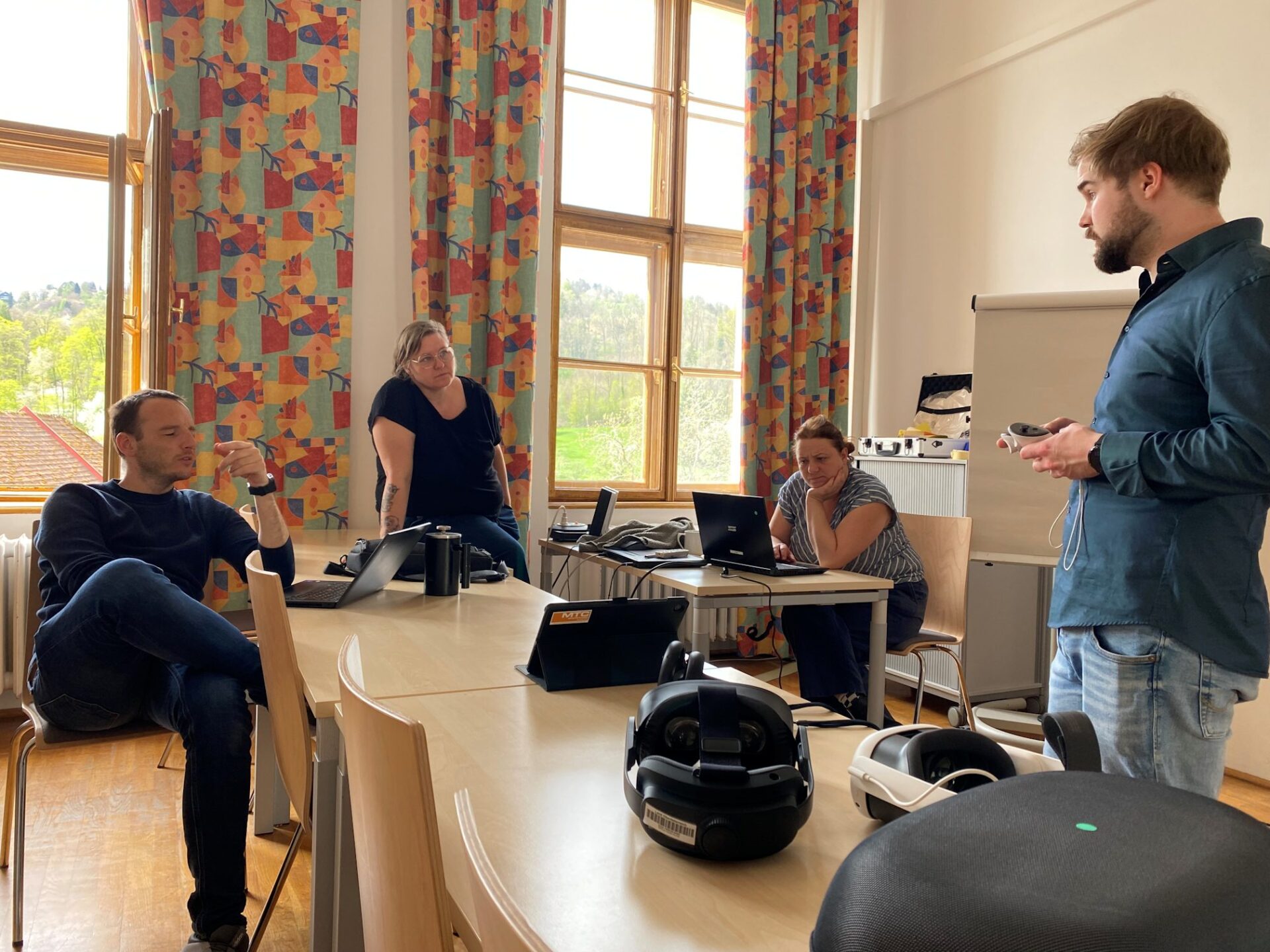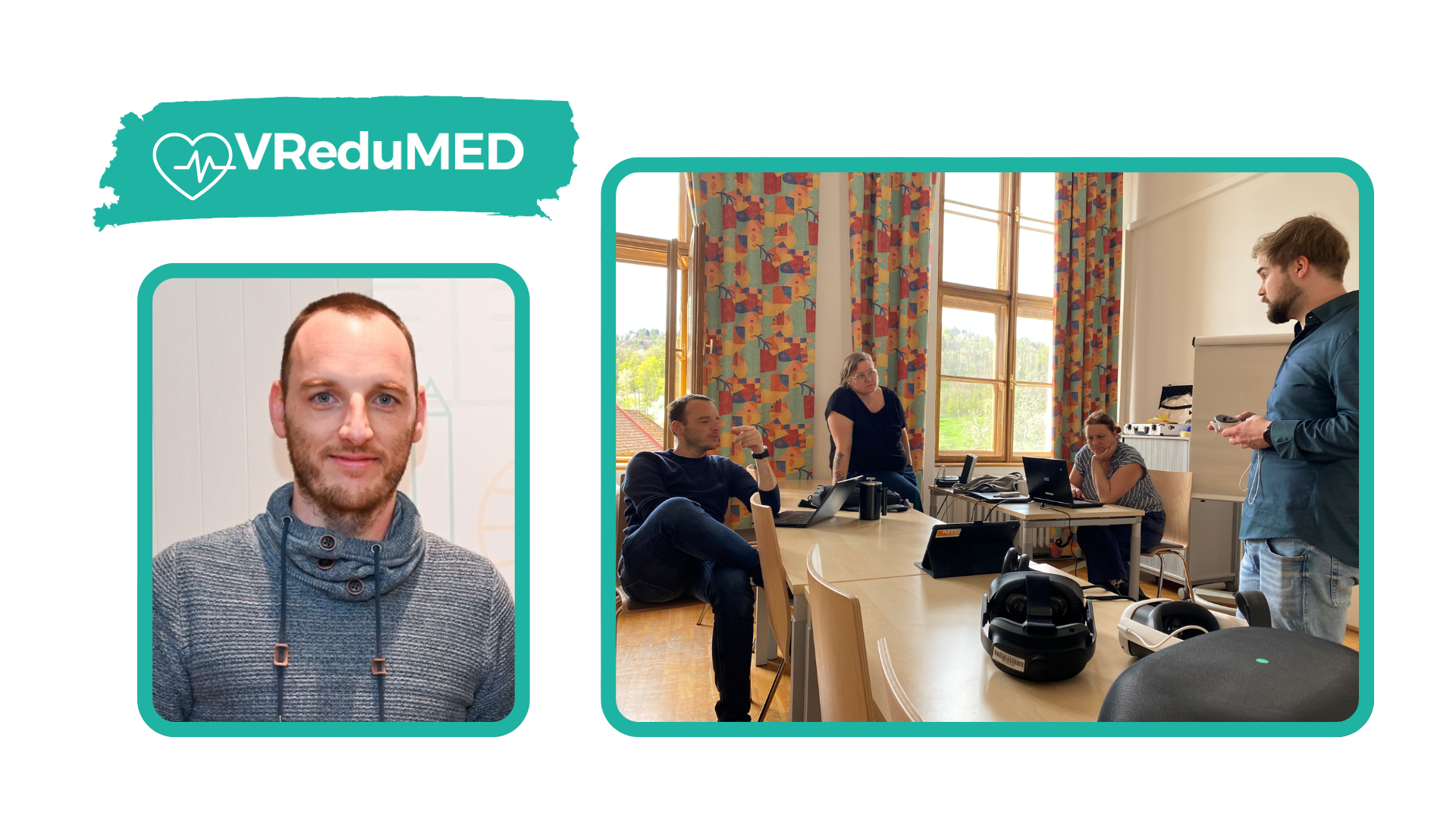The training programs range from shorter courses (e.g. for daily companionship, companionship for home help, nursing assistance) to specialized social care, diploma social care (both with a focus on elderly care), or supplementary training in specialized social care with a focus on work with people with disabilities. The length of the training programs offered varies accordingly: It ranges from eight months for home help to two and a half years for diploma programs.
The continuing education programs provide specialized training to managers in the health and social care sector, residential group managers, and practical instructors. Advanced training courses cover topics such as care and nursing, communication, and mental health, as well as expanding skills in nursing assistance and management. These courses are organized both at the geriatric care school’s locations and directly in the care facilities.
In Austria, there are numerous opportunities to pursue education in the nursing field. These include:
- Training programs for various medical-clinical assistance professions and social care professions.
- Training courses for nursing assistants and schools for nursing as well as
- advanced continuing education programs and academic specialization courses.
A general overview of education at the Secondary Level II for Health Professions, including education and training for healthcare professions, is provided by this publication from OeAD (Austria’s Agency for Education and Internationalization): Health Professions, Education and Training for Healthcare Professions
Due to the high permeability and variety of institutions, qualifications, and specialization options, we have described the educational pathways to key professions in nursing as well as some specific training opportunities in Upper Austria in a compact summary.
Training and professional practice: Insight into the challenges of everyday nursing
The students at the Altenbetreuungsschule are as diverse as the educational offerings: They currently range in age from 17 to 55. When asked about the current challenges in the training programs, Michael Hinterdorfer says that unfortunately, students who choose these programs often fail to persevere and complete their training due to the intense workload, difficulties during the internship, or family commitments. Yet the nursing profession gives so much back, says Hinterdorfer, who only graduated at the age of 27 and previously pursued various other career and training paths.
In order to effectively and sustainably integrate people whose native language is not German into a dedicated course and to successfully qualify them for a solid training in nursing, the geriatric care school has developed a particularly successful approach: This training is preceded by a two-month induction module to explore professional aptitude and personal attitudes, as well as to lay the foundation for appropriate language skills. After these two months, a committee decides which candidates will continue their training. These students also receive German lessons and learning support one day a week during their training. This overall package achieves very good results and enjoys great popularity due to the high quality and commitment shown by the trainees.
A key principle of the Altenbetreuungsschule is the close integration of theory and practice: This cooperation with nursing facilities as part of the training gives Michael Hinterdorfer intensive insight into the challenging daily routine of nursing. This demonstrates the massive pressure placed on nursing staff, leading to burnout being a major problem for them. The field is extremely demanding for a variety of reasons – from exceeding one’s authority and a lack of recognition for the work performed, to the intense time pressure and the enormous moral stress of not being able to meet the demands.
Rigid organizational structures, a lack of innovation, and external interest groups that influence nursing practice are additional factors that pose significant challenges to nursing practice. While various initiatives are intended to alleviate the nursing shortage, Hinterdorfer argues that some solutions are more of a burden than a help to those working in nursing services. He describes how, for example, additional support staff ties up a significant amount of coordination time from qualified professionals, who are thereby restricted in their core duties while still having to bear full responsibility.
In addition, there is the significant problem that numerous reforms are not designed and implemented with sufficient involvement of nursing experts: Because nursing in Austria is fragmented and organized across a variety of providers – both private and public – in federal structures and thus subject to different responsibilities, there is unfortunately no “unified voice” with which to discuss nursing concerns, for example, in the relevant negotiations. As a result, many nurses often feel controlled by others and misunderstood and become resigned to their work.
Digital tools for nursing training: VR in ward operations
The “Altenbetreuungsschule des Landes OÖ” already has experience with VR: They purchased three HTC Vive Focus 3s, which are used with a content package from the German company Insimity to visualize the heart. This content provider also offers other content packages, but these were not used in practice by the nursing school because, for example, other procedures can be better trained using other forms, and the VR simulation of endotracheal suction was considered poorly implemented by teachers.
The educators embed the use of visualization on the topic of the heart in a special teaching setting, which Michael Hinterdorfer describes as follows: “We call the station operation a ‘digital experience workshop’: The trainees complete several stations on the topic of the heart and heart health. At one station, a text deals with cardiovascular diseases and how they are related to nutrition. From this, the students create a one-minute wonder, i.e. a mini-poster. The second station is about recording blood pressure in apps. At the next station, they have to make a short video on the topic of vital parameters or blood pressure measurement.
One station will be virtual reality combined with a tactile, tangible heart model. The model is disassembled; the students must reassemble it and then explain the path of blood through the heart, which they will then experience more intensively with the VR headset. Approximately 20 minutes are planned for this setting, including the real-life task.
VR-based training in geriatric care: challenges, acceptance and future potential
Hinterdorfer sees the technical infrastructure as a key challenge, as technology is evolving at an almost explosive rate. The school itself has experienced this firsthand: The decision to use the currently used headsets was not taken lightly, and ultimately it was based on the consideration that a corresponding content package specifically for nursing care would be available. Within a very short time, however, other headset models and other content libraries have changed this situation. The geriatric care school would now decide to use VR headsets that also support use in AR mode.
One of the biggest challenges in using VR is gaining acceptance among teaching staff and creating awareness that this technology offers real added value and represents an additional, valuable offering for trainees, says Hinterdorfer. However, this problem can be successfully counteracted if the curriculum offers links to VR applications. The geriatric care school has already had very positive experiences using VR in association with various sources and tasks in small groups: Through the combination with other learning resources and methods, the added value of VR is immediately apparent for students and teachers, which significantly increases acceptance.
The role of individual teachers, who act as early adopters and inspire their colleagues to use VR, is also a key factor for the successful use and acceptance of VR in the classroom. In any case, it is essential to have VR solutions available that are technically easy for teachers to use and also offer the option of streaming the headset screen via a projector—the latter is essential in the classroom.
The Altenbetreuungsschule would generally benefit from more quality medical content for its professional training, so that these excellent visualization and simulation possibilities can be utilized for other topics as well. The teachers particularly value VR for its ability to visualize structures in the body and thus bring these three-dimensional worlds of experience closer to the trainees. Michael Hinterdorfer himself was particularly fascinated by the anatomy apps, as they allow for a completely different, comprehensible experience of relationships and spatial conditions. Less interesting is the training of processes, as these are taught in a much more practice-oriented manner.
Furthermore, VR-based training sessions that could practice dealing with and communicating with patients with specific illnesses would be very welcome, specifically, for example, in working with patients suffering from dementia: A nurse enters a room with a patient with dementia, must respond to their questions and actions, and react accordingly. Counter-reactions occur – perhaps with AI support – thus creating a training situation that is as realistic as possible. Such simulations have great potential and could bring real added value to training institutions such as geriatric care schools in the future.
Further information about the Altenbetreuungsschule des Landes OÖ
https://www.altenbetreuungsschule.at

©Michael Hinterdorfer, Altenbetreuungsschule des Landes OÖ ©Astrid Leeb, Edugroup
Michael Hinterdorfer with two colleagues from the Altenbetreuungsschule des Landes OÖ at the VReduMED workshop
